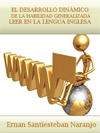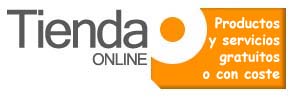
EL DESARROLLO DINÁMICO DE LA HABILIDAD GENERALIZADA LEER EN LA LENGUA INGLESA EN ESTUDIANTES DE DUODÉCIMO GRADO EN EL NIVEL PREUNIVERSITARIO
Ernan Santiesteban Naranjo (CV)
ernansn@ult.edu.cu
Isbn:-Pendiente
Propuesta de enunciados de ejercicios para los textos transaccionales
Teniendo en cuenta que los textos transaccionales presentan características del lenguaje escrito con tendencia hacia la lengua científica, al carecer (no en absoluto) de recursos estilísticos y medios expresivos, al tener la posibilidad de transmitir conocimiento, al aparecer la información explícitamente y por ende la necesidad, desde la perspectiva didáctica, de desarrollar la operación generalizada entender; se propone el siguiente conjunto de enunciados de ejercicios cuya finalidad se centra en el logro de la referida operación generalizada. El mismo se basa en el texto, en su contexto como máxima unidad de significación y tiene en cuenta la relación intersujetos.
El conjunto de enunciados de ejercicios enfatiza en: la significación literal del texto, la determinación del micro-contexto y la determinación de la significación expresada en sentidos o ideas. De ahí, que se deban aplicar con los textos transaccionales. Es necesario tener en cuenta que el texto sugiere qué ejercicios son más apropiados para desarrollar con él.
Los enunciados que se proponen a continuación son el resultado del análisis de la literatura y de la experiencia acumulada que ha permitido corroborarlos como factibles en esta tipología textual, para desarrollar habilidades lectoras, básicamente la operación generalizada entender y las operaciones que intervienen en este proceso de decodificación.
- State what has called your attention the most. Why?
- Say / state what the author codified in the text in other words.
- These pictures represent the different stages of the text, organize them as the events happen in it.
- Put the jumbled paragraph of the text into the correct order.
- Put the jumbled sections of the text into the correct order.
- Fill the gaps in the text.
- Put the summarizing statements into the correct order; so as to form a new text.
- Provide a new title for the text.
- Choose a new title for the text. (Several options are given).
- Label a diagram according to the information provided in the text.
- Note down the main information of the text in the form of a table or a chart.
- Note down the main information of the text in the form of a paragraph in no more than ___ words.
- Taking in to account the information of the text, write two lists:
- Things that are the same in… as…
- Things that are different in… from / to…
- Skim through the text quickly & get the main idea.
- Choose the picture (A,B, C or D) which the following sentence / paragraph describes.
- Taking in to account the information provided in the text, complete the gaps in the following sentences. (just a couple of sentences)
- According to the information of the text, complete the gaps of its summary.
- .…(words) are unfamiliar to you, guess their meaning by means of the context.
- Here are three summaries of the text. Which do you think is the best? Why?
- Study this list of texts on… which would you refer to if you were:
- (…) different situations are provided.
- From this list of text, choose the one(s) you would go if you were:
- (…) different situations are provided.
- Study these content pages from… Which chapter & which section would you consult if you wanted to help with these questions?
- From this text, which lines would you refer to for helping with each of these problems?
- According to the title of the text, predict what the text is about?
- Here is the text in jumbled order. Try to put the paragraphs in the correct order. Refer to the senses that helped you do it.
- Imagine that you are writing a book of fitness exercises. Create a simple exercise that will be in your book, taking as starting point the information provided in the text.
- Could you refer to what examples of advances of science appear in the text?.
- Say the number of the paragraph that refers to:…
- Try to fill the blanks with the words from the passage without looking at it.
- How would you explain the following statement particularly the underlined expressions after you have analyzed the text?
- Provide the endings of these ideas according to the text.
- Determine two examples from the text to support the idea that…
- In your opinion, which is the sentence that best sums up the general idea of the text. (Some options are given).
- Mention some common… affecting… regularity.
- Scan through the text & find ...
- Tell which of these topics best express the main idea in paragraph number___.
- What do you consider is the principal cause of…?
- Skim through the text as quickly as you can, & try to find out what is it about?
- There are lots of causes that may bring about… Can you mention some of them?
- According to the information provided in the first three paragraphs, explain, in your own words, what is…
- What does the title mean in relation to the passage.
- Note down in your notebook the differences between the two versions-
- Refers to the advantages & disadvantages of…
- Suggest changes that make the text more concrete.
- Collect the outstanding information of he text. Report it to the class.
- Before reading the text about…, answer the following questions:( one or two questions).
- The title of the text you’re going to read is…Can you guess what might be about?
- Discuss your idea with a partner
- Look at the picture that accompanies the text and say if they corroborate your guessing. Why?
- In the following text, many words have been taken out. Complete the text by filling the blanks with the words seem most appropriate to you from the ones given in the list below.
- In the following text, some arguments have been presented for or against…Decide whether the following arguments are for or against…
- After reading the text, decide which drawing represents…
- Here is a recipe for…unfortunately, the instructions are not in the right order. Could you reorder them?
- Complete the schemata according to the information provide in the text.
- Sometimes a whole line or more from the one of these articles got mixed of with the others. Read both articles & after, rewrite the articles in the right way.
- Read the descriptions of the lecture series at…which lectures did each of these quotations come from-lecture # 1, lecture # 2, or lecture # 3?
- Look at the following map carefully. Then, explain to your classmates which roads & neighboring villages are?
- Using the information of the text, locate in the map the name of each city.
- Look at the timetable. All the flights leave from … then, choose a partner & discuss these questions…
- Suggest a better way of arranging the information about the facts in the text.
- Try to fill the blanks with the words from the passage without looking at it.
A continuación se presenta un ejemplo de un texto transaccional y algunos ejercicios que se pueden aplicar con él.
“The Story of Helen Keller”
Helen Keller was a normal baby until she was nineteen months old when she became ill with a fever that left her blind & deaf (...). Consequently, she became also mute.
(...) A young teacher, Anne Sullivan, (...) gave Helen a doll (...). After some minutes Miss Sullivan took the Child’ s hand & spelled the letter D-O-L-L into Helen’ s palm.(...).
Miss Sullivan (...) taught Helen new words like water, cup (...) up to thirty. (...). Another teacher, Sarah Fuller, helped Helen to “talk”. (...) Helen learned English & French & studied at the University, With Miss Sullivan beside her spelling the professors’ lectures into her hand. She graduated when she was twenty-four years old.(...).
Exercises:
- According to the title of the text, predict what the text is about.
- Here is a text in a jumbled order. Try to put the paragraphs in the correct order. Refer to the senses that helped you do it.
- Provide a new title for the text.
- Complete the gaps in the following extract in accordance with the context of the text.
Helen was a normal babe, but she became _________& she was left _______ & _______. Therefore, she became _________.
Helen had two great teachers: __________________ & ___________________. __________taught Helen about__________ words by spelling into Helen’ s palm. On the other hand, __________ taught Helen how the articulatory system works. So, Helen could learn ____________.
Helen learned ________& __________& _________________. This means, that she ________ the three ___________.
- State what has called your attention the most. Why?
- In your opinion, how do you value Helen’ s teachers’ stance. Support your opinion.
- Value Helen’ s attitude to face life. Support your opinion.
- Refer to what the author codified in the text in other words.
Estos ejercicios permiten valorar al texto en su contexto como máxima unidad de significación. Hacen énfasis en la significación literal del texto, en la determinación de la significación expresada en ideas o sentidos y en la ubicación del micro-contexto; por lo que permiten la potencialización de la operación generalizada entender, al hacer énfasis en lo explícitamente expresado. Como se puede apreciar, para la realización de los mismos se requiere del entendimiento del texto, cuestión esta, que diferencia esta concepción del enfoque tradicional donde el estudiante es un simple “respondedor de estímulos”.
Específicamente en el ejercicio número ocho(8), el estudiante debe referir lo que codificó el emisor en el texto y para ello lo emitirá empleando sus propias palabras.
El referido ejercicio contribuye a la búsqueda de la clave semántica. Persigue, además, revelar a partir de la lectura las características generales y particulares, de las cuales se precisan las esenciales y aquellas que posibilitan junto a la esencial, la ubicación del micro-contexto.
Propicia enriquecer el entendimiento, el enfrentamiento de los procesos lógicos del pensamiento, así como el desarrollo de la percepción (a partir de los estímulos visuales que aparecen en la pagina) y el lenguaje. Posibilita el análisis del texto de forma general, como un todo, y la valoración de sus partes.
| En eumed.net: |
 1647 - Investigaciones socioambientales, educativas y humanísticas para el medio rural Por: Miguel Ángel Sámano Rentería y Ramón Rivera Espinosa. (Coordinadores) Este libro es producto del trabajo desarrollado por un grupo interdisciplinario de investigadores integrantes del Instituto de Investigaciones Socioambientales, Educativas y Humanísticas para el Medio Rural (IISEHMER). Libro gratis |
15 al 28 de febrero |
|
| Desafíos de las empresas del siglo XXI | |
15 al 29 de marzo |
|
| La Educación en el siglo XXI | |




